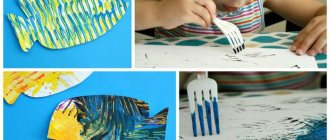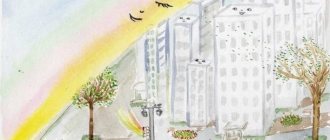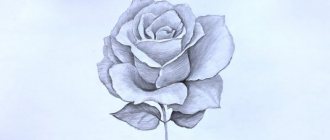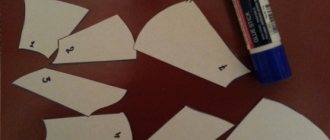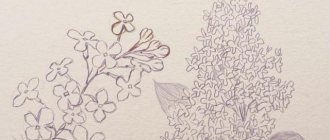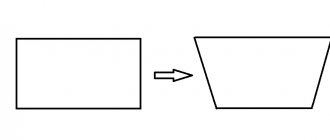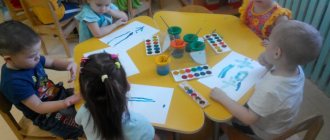Preview:
Goal: Creating conditions for the development of creative abilities in the process of productive activity.
• teach children to name factors that influence health promotion (sun, air, water);
• Form and instill healthy lifestyle skills, develop hygiene skills: hand washing, brushing teeth, weekly bathing.
• help children understand that health depends on proper nutrition - food should not only be tasty, but also healthy; Explain to children how vitamins affect the human body;
• develop attention, thinking, imagination;
• instill in children a desire to take care of their health.
Preliminary work: talking with children about health.
Materials: colored pencils, sheets of drawing paper, Pilyulkin doll.
Educator - Guys, we received a letter from Dunno, listen to what he writes to us.
“Hello guys, my name is Dunno. I had a problem, I got sick. They say that in order not to get sick, you need to eat right. I tried, I ate only tasty things: candy, cakes, and drank Pepsi Cola. But unfortunately, I'm getting worse and worse. Guys, please help me figure out what I need to do so as not to get sick.”
- Guys, let's try to help Dunno.
Health is the most important value given to a person. What does it mean to be healthy? Children: When we are healthy, we want to play, dance, draw, we are in a good and cheerful mood. Educator: Our health can be compared to a flower that has many petals; these petals live in every cell of our body. Petal “Physical Exercise” Educator: Physical exercise can replace many medications, but not a single medicine in the world can replace physical exercise. Let’s think about what benefits physical exercise brings? Children: Strengthen muscles, harden the body, drive away fatigue, give us a cheerful, good mood. Educator: You and I do exercises every morning, we end the exercises with the words: Children: “Do exercises every day - you will be strong, you will be brave.”
“Health is good, thanks to exercise”
Educator: And now we will do self-massage. We will stroke your nose boldly. So as not to cough, not to sneeze You need to rub your nose We will also rub your forehead, Hold your palm with a visor Yes, yes, yes
Yes, yes, yes We are not afraid of colds Petal “The sun, air and water are our best friends” Educator: The sun, air and water are very necessary for our health. Our body and all living things on earth need them very much. “Without breath there is no life. Without breath the light fades, Birds and flowers breathe, He and I breathe, and you.” Where do you think the cleanest air is: - in the city or in the village (in the village - there is little transport) And where is the air rich in oxygen? (in the forest) Now let’s go to our flower and open the next petal. Petal “Food” Educator: Guys, listen to the proverb: “Whether you want it or not, you have to eat.” Why does the proverb say this? Why does a person need food? (children's answers) You need to eat in moderation. It’s bad when a person doesn’t finish eating or overeats. Not every food is beneficial. Now we will check what healthy and harmful foods you know. You and I will go to the store: D/I “Harmful and healthy food”, “Name the juice” (formation of relative adjectives) Well done! I will definitely tell your mothers that you know and know how to choose healthy products. Who knows what vitamin food is? (children's answers) Vitamins are found in vegetables and fruits. What vitamins do you know (A, B, C) I have three baskets (A B C) What vegetables and fruits will we put in the basket with vitamin A? (carrots, garlic, red pepper, tomato) These vitamins help with poor vision, brittle hair, and unhealthy skin. Basket with vitamin B (beans, green peas, rice, buckwheat). Basket with vitamin C (black currant, orange, lemon) Vitamin C increases the body's protective properties, helps the functioning of the heart and blood vessels, and strengthens bones. Petal “Personal Hygiene” Educator: To be healthy you need to follow the rules of personal hygiene: wash your hands, brush your teeth, bathe
Rules of personal hygiene.
Let's repeat them. (Children repeat)
You need to wash your hands with soap before eating. after visiting the toilet.
Wash your face in the mornings and evenings.
Brush your teeth twice a day.
Take care of your clothes and their cleanliness.
Don't forget about personal items.
We wish you to always follow the rules of hygiene and then you will always be healthy and cheerful, and you will always be in a good mood.
Maintaining good hygiene will help us stay healthy.
Educator: Now, guys, you and I know what we need to be healthy, and we can help Dunno. I suggest you draw a flower of health for Dunno, so that he knows what to do in order not to get sick, and Pilyulkin will take this flower to him.
Educator: Let's summarize our lesson. Look at our flower and tell me what is good for our health? (Children's answers) Well done.
Source
Summary of the lesson in fine art (in the middle group) “APPLE”
1. Develop cultural and hygienic skills and the habit of taking care of your health.
2. Development of children's creative abilities: sense of color, compositional solutions.
3. Teach children to depict an apple using a means of expression: color, shape, size, correct location on the sheet.
4. Strengthen the skills of shaping movements and moving the brush along the pile.
5. Education of aesthetic perception of still life.
Preliminary work:
Didactic games “Fruits and vegetables”, “Guess the taste”, “Wonderful bag”.
Examination and description of various fruits.
Examination of the still life by P. P. Konchalovsky “Apples on the table”
Materials, tools, equipment:
Gouache paints, brushes, cups, napkins, cardboard plates, palettes, apples according to the number of children, bag, toothbrush, soap, toothpaste, napkins, comb, apple.
Lesson content:
Educator: Guys, look what I found! (showing the bag)
Does anyone know whose bag this is? Maybe someone decided to give us a gift? I wonder what's there? (I look into the bag)
-Children take out one item at a time and tell what each item is for and how to use it.
The teacher comments on the children’s statements with lines from a fairy tale (scented soap, fluffy towel, tooth powder, thick comb). The teacher suggests touching objects, smelling them and indicating their sensations: hard, soft, fragrant, etc.
Who gave us this bag?
Children: Moidodyr
Educator: Oh, what is this?
Children: Apple!
Educator: I think that Moidodyr and Aibolit gave us a bag
Why do you think Aibolit sent us an apple?
Children: Apples are vitamins to be healthy.
Educator: But we have one apple, and there are many of you
What to do ?
Educator: I think I came up with it! Now we will draw apples.
Just as juicy and rosy?
Physical education minute
Educator: Well done! We had a lot of fun!
Now let's draw our apples.
Children: Yes!
(Children sit at tables)
Educator: We will draw our apples on a plate. To do this, we need to try and become artists.
—Who are these artists?
Children: Artists paint pictures.
. They try to notice the beautiful, beautiful, and unusual in ordinary objects.
Ah, now I want to introduce you to the works of real artists who painted still lifes. A still life is a painting that depicts flowers, fruits, household items, and things that a person uses. These artists also depicted apples in their paintings.
I. Khrutsky “Flowers and Fruits”.
Educator: Look carefully at this still life. <Figure 1>
- Do you like him?
—What do you like most?
In this picture everything looks like the real thing. Beautiful flowers, juicy apples, velvety peaches, transparent grapes.
K.S. Petrov-Vodkin “Apple and Cherry” <Figure 2>
Educator: Oh, this is a still life by another artist.
— How does this still life differ from the previous one?
Here the artist depicted only an apple and a cherry.
Educator: We have just looked at two still lifes.
And in each painting we saw how artists depicted an apple in different ways. This does not mean that someone paints worse or better pictures. Each artist has his own vision of the world.
Now we will draw this apple (showing).
—Where does an artist begin his work?
(carefully examines the object he will depict)
Let us take a close look at our apple.
-What is its shape, taste and color?
(round, large, smooth, elastic, juicy, red with a yellow side)
Educator: Everyone took a brush in their right hand. Let's try to draw our apple in the air (children move the brush through the air, describing a circle)
Now let’s paint with a dry brush on a plate,
We try to get a beautiful, regular apple shape.
Well, you and I have made a sketch, like real artists, and now we begin to draw.
Educator : What great fellows you all are! You did great! The apples look like real ones, you just want to take a bite.
Now let's put them in our magic box and see what happens
(I take real apples out of the box and treat them to the children)
These are the apples we drew!
Well done! Author: Shilova Yulia Mikhailovna
On the topic: methodological developments, presentations and notes
Plan of drawing notes (preparatory group) on the topic: “Winter Landscape” using the non-traditional “Imprint” technique (drawing with vegetables).
Goal: To consolidate children’s knowledge about wild animals; Objectives: Communicative and personal objectives: to activate vocabulary on the topic “Wild Animals”; learn to answer questions with complete answers.
Notes on drawing using non-traditional techniques.
Program content. Expand children's knowledge about the variety of mushrooms. Learn to draw mushrooms of different shapes, structures and colors. Practice drawing a forest clearing. Strengthen the ability to draw with paints and...
Program content: Learn to depict various types of transport, their shape, structure, proportions (ratio of parts by size), consolidate the ability to easily draw an outline with a simple pencil and fill.
Program content: Learn to depict various types of transport, their shape, structure, proportions (ratio of parts by size), consolidate the ability to easily draw an outline with a simple pencil and fill.
Program content: • To form in children an aesthetic vision of nature in works of fine art, to evoke an emotional response to the beauty of nature in winter.
Source
On the topic: methodological developments, presentations and notes
The teacher introduces children to the human body and how to strengthen its muscles.
Goal: Fix the score within 7. Program content: 1. Fix the score within 7.2. Reinforce knowledge about the days of the week, their sequence and reciprocity.
Organized educational activities on physical culture in the air “Is your health okay? Thanks to the charger!”
Summary of entertainment in the senior group: exercises, competition games.
Objectives: To give children an idea that exercises vary in difficulty. At the beginning, you need to do easier exercises, and then proceed to more complex ones. Form a desire.
The event is intended for children of senior preschool age 6-7 years old. Goal: to introduce children to physical education and sports, and a healthy lifestyle. Objectives: To create a cheerful, joyful life.
Tasks. Teach children to monitor their health and take care of it. Fix the parts of the human body with children and expand children’s understanding of exercises for different parts of our body. Raise desire.
Source
Summary of a drawing lesson for older children “Living Vitamins”
Oksana Telikova
Summary of a drawing lesson for older children “Living Vitamins”
Good day, friends and guests of my blog! On the topic of the week: “We want to be healthy!” I worked with children of the older group on drawing “Living Vitamins”
draw a fruit or vegetable, “revitalizing” it with the help of your face, arms, legs.
Tasks:
* Develop the ability to work on a plan, mentally imagine the contents of your drawing, and develop compositional skills.
* Develop creative imagination, the ability to convey the character of the object being drawn, achieving expressiveness with the help of color, dynamics, facial expressions, and additional details.
* Develop figurative memory, imagination, the ability to see the unusual in the ordinary.
Materials for the lesson:
Preliminary work:
reading Y. Tuvim “Vegetables”, watching the cartoon “Cipollino”, looking at illustrations of vegetables and fruits.
Drawing on the theme “Be healthy!”
Municipal preschool educational institution "Kindergarten No. 148"
Summary of a drawing lesson in the senior group on the topic “Be healthy!”
Prepared by: 1st category teacher
Summary of a drawing lesson in the senior group on the topic “Be healthy!”
Goal:
Creating conditions for the development of creative abilities in the process of productive activity.
teach children to distinguish vitamin-containing foods;
Explain to children how vitamins affect the human body, their benefits and the importance of vitamins for human health;
develop attention, thinking, imagination, active and passive vocabulary;
instill in children a desire to take care of their health.
Preliminary work:
conversation with children about health;
preparing worksheets. Materials:
colored pencils, worksheets, sheets of drawing paper, boxes, jar, Pilyulkin doll.
Educator
- Guys, we received a letter from Dunno, listen to what he writes to us.
“Hello guys, my name is Dunno. I had a problem, I got sick. They say that in order not to get sick, you need to eat right. I tried, I ate only tasty things: cakes, sweets, and drank Pepsi Cola. But unfortunately, I'm getting worse and worse. Guys, please help me figure out what I need to eat so as not to get sick.”
- Guys, let's try to help Dunno.
Tell me, what do you like to eat most? (Children's answers)
What do you think is the difference between “tasty” and “healthy”? (Children's answers)
What healthy and what harmful products do you see in the picture? (Children's answers)
Guys, do you know that foods contain substances that are very important for human health, called vitamins? (Children's answers)
— Yes, vitamins have different effects on human health.
Vitamin A
is very important for vision and growth.
Vitamin B
promotes good heart function
- Of course, you shouldn’t completely give up sweets. However, it is necessary to eat a variety of foods in order to be strong, healthy and grow quickly.
Doctor Pilyulkin
- Oh, I mixed up all the vitamins!
Guys, I’m running to treat Dunno, help me put the vitamins into boxes. Children collect balls from the floor and sort them by color.
